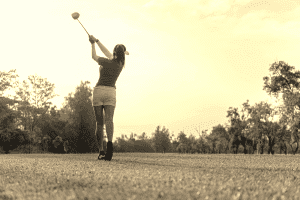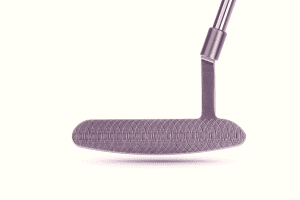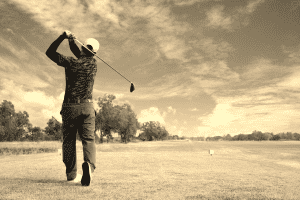If you’re new to the game of golf, it’s likely that you’re not aware of the etiquette observed on and off the course in the game of golf. The truth is that good players will always be willing to play with newer players, but they will expect that you show respect to the rules of golf and adhere to standard manners on the course.
Not adhering to some of the rules of the game can start to annoy your playing partners. Unfortunately, not knowing etiquette on the course isn’t an excuse for most players, and you’ll be shown little sympathy, especially if your actions directly affect their round of golf.
Here’s a guide on everything you need to know about golf etiquette; paying attention to these tips will speed up your round, keep your playing partners happy, and allow everyone to enjoy themselves.
Why is This a Thing?
There are many rules of golf, and I’d be lying if I told you I know all of them by heart. That said, proper etiquette while playing is essential.
So, why is this a thing?
Observing golf etiquette really serves 2 main purposes: keeping pace of play at a good speed, and leaving the golf course in the best possible condition. Keeping pace of play up is extremely important, as your pace will affect golfers both in your group and all golfers who are playing behind you. Leaving the golf course in the best condition possible is pretty self explanatory; leave the course the way you’d like to play it. Simple as that.
Pre Round
Yes, there are some expectations of you even before your round begins. Pre round expectations are pretty straight forward, but they set you up for success for the rest of the day.
Show Up On Time
Obvious? Maybe. But if your tee time is 9am, showing up at 9am is considered showing up very late. Most of the time, there will be several groups going off before and after you, and being late will annoy everyone involved. Being on time for your tee time means arriving at the course at least 20 minutes before you’re due to tee off as a group; you should be ready at the tee box at least 5 minutes before your time.
If you’d like to practice at the range or on the putting green before your tee time, I suggest giving yourself another 30-45 minutes to be safe.
Locker Rooms
It’s common for golf courses to have locker rooms, and virtually every private golf club has one. Feel free to use the locker room to change into golf clothes. Even if all you need to do is swap your regular shoes for golf shoes, golf courses appreciate you using these facilities rather than the driving range, parking lot, or other areas.
Appropriate attire
You wouldn’t play football in jeans and a hoodie, and you definitely shouldn’t play golf dressed that way either. When you show up to play golf, make sure you’re wearing the appropriate attire. Some Country Clubs are explicit in their requirements: Shirt tucked, golf polo mandatory, no cargo shorts or jeans. This is typical dress, but it’s important to know you can usually wear either golf shorts or golf pants at any golf course, and a golf polo is standard. Playing great starts with looking the part, so make sure you put in the effort.
Pro Shop
Golf bags are not allowed in the Pro Shop. Just don’t do it. You should go into the pro shop to settle up any payments for tee times, buy any merchandise you need or want, and then head back out to the course.
On the Tee

There are dozens and dozens of rules to adhere to in golf while playing, and I’m not going to cover all of them. I’m going to cover the important ones, the ones you’ll find most useful every round.
Who Hits First?
On the first tee, your group will need to decide on who will hit first. I like to toss a tee in the air and see who it points to, and have them go first; you can draw straws, or just designate an order.
Beyond the first tee, there are a few ways to play this:
Lowest Score
This is widely accepted as the best method to choose who will hit first for the rest of the round. If one person shoots birdie and everyone else is at par or better, birdie man (or gal) hits first, and the rest follow in an ascending order. This is always the method used in tournament or competitive play.
Ready Golf
I like ready golf, and in amateur play most people are just fine with this. Ready golf means that whoever is ready first goes up to hit. This speeds up play for the entire group, and creates a good flow from hole to hole. Feel free to ask your partners if they’re fine with playing ready golf, and then just go for it. If everyone’s ready at the same moment, usually you’ll revert back to ascending order.
While You’re Not Hitting
While someone else is hitting their tee shot, do your best to not be in their line of sight. The last thing the person on the tee wants is to see you in the corner of their eye while they swing. Give them plenty of room, and stand off to the side or far behind the person on the tee. Be sure your shadow isn’t being cast onto where they’re hitting, either!
It’s also considered to be very rude to talk while someone else is hitting their shot. The game is hard. The last thing a golfer wants is to lose their focus because you’re recapping what you did last night to someone else. Stay quiet anytime someone is hitting a shot, whether it’s on the tee, in the rough, on the green or otherwise.
Practice Swings
Chances are, if you’re reading this you’re not a PGA Pro. Don’t feel like you need to take 10 practice swings; not only will this tire you out, but it will impact your ability to hit a good shot. Give yourself 30-45 seconds to set up, take 1-2 practice swings, and go for it!
Fore!
When you hit a shot that is heading towards any group of people, the right thing to do is yell “fore!”. This is the universal “look out, a ball might hit you in the face” calling card, but most people won’t be able to get that out of their mouths in time. Yelling fore may be one of the most important things covered here, because it can genuinely prevent serious injuries.
On The Course
Golf Cart Etiquette
This can make or break the pace of play for a group. Using the golf cart in a time efficient manner helps everybody. Locate the ball that has the furthest to the hole, and drop that player off with their clubs to hit their shot while you go to your ball to set up. Once the first player hits, have them walk up to where the golf cart is, and you’ll be on your way. Efficient, and speeds up play.
Phone
Unless it’s an emergency, the best practice is to keep your phone use to a minimum while playing golf. Staying off your phone helps you be in the right mindset to play well, and gives you a chance to chat with the people you’re playing with.
Divots
Chances are, if you’ve hit a good shot you will have taken a divot out of the ground. Replacing your divots is a fundamental of good golf etiquette; you always want to do your best to leave the course the way you found it. Doing this shows that you care about keeping the golf course in good shape, and helps maintain the golf course. Most golf courses will have a mixture of sand and seed to help fill in your divot, and it’s imperative you do so. Just do it.
Mulligans
A mulligan is not technically legal. Simply put, a mulligan is a “re do” of a shot. You’ve shanked a ball into the woods, or hit a wicked slice, and you’re rightfully upset. You know you can do better, so you put another ball down and try and execute the shot you intended.
Mulligans are great, but they contribute to slow play, especially if you use one every hole. Limit your mulligans, if you play with them at all; give yourself 1 per side if it’s a casual round. This will make you feel like every shot is important.
Hitting Up on Groups
This is one of the more disrespectful things you can do on the golf course. When a group of golfers is in front of you hitting their next shots or finishing a hole, you should never put yourself into a position where you could hit them with your shot. If you *might* be able to reach the green, or hit to the distance they’re at off the tee, you need to wait. They’re not going anywhere, so wait until all is clear. Hitting into a group is dangerous, and will tick off any golfer.
Playing Through
Sometimes there will be a good reason to pass the group ahead of you, or for another group to play through you. Maybe you’re a group of 2 playing much quicker than their group of 4 or vice versa. Playing through just means letting faster golfers go ahead of you, which ties into keeping the overall pace of play.
Sometimes, this can be an awkward situation. If one group is clearly playing faster, it can become frustrating feeling like someone is pressuring you to play quicker, especially if you’re a high handicapper. The right thing to do is to let them pass at the most convenient moment. It’s much easier to let people play through on a par 3, or after you’ve played the first 9 holes.
Lost Balls

You’re allowed to look for lost balls for about 3 minutes on the PGA Tour, and this is also common at your average country club. That said, pick your battles on lost balls. If you’ve sailed a ball deep into the woods, you’ll be wasting everyone’s time trying to find it, and you’ll spend much more than 3 minutes doing so. If your ball went into the trees by a few feet, obviously give it a much harder look.
If you can’t afford to lose the balls you’re playing with, you may want to play with cheaper golf balls. Admitting a ball is lost and moving on will always speed up play, and keep the rest of your group from getting frustrated on spending half their round searching for balls.
Bunker Etiquette
There are a few basic things to know about etiquette when you need to play out of a bunker. First off, locate the most convenient rake; the rake should always be outside the bunker, so that the ball doesn’t come to rest against the rake. There are usually a few, so grab one and place it near where you’d like to enter and exit the bunker.
Next, try to give yourself as little work as possible in the bunker. Walk in carefully, and once you’re hit your shot, retrace your steps so that you don’t create more tracks you need to cover. From there, rake the sand to get rid of your footprints, and leave the rake outside the trap again. Simple, but very important.
On the Green
No Golf Bags
Never bring your golf bag onto the putting surface of the green. Doing so will create marks on the green that are unwanted, and can potentially ruin someone else’s approach to the cup. Instead, leave your golf bag on the fringe completely off the putting surface, or leave it near the next tee for convenience.
Fixing Ball Marks
This is another cornerstone in golf etiquette, yet so many lazy and inexperienced golfers don’t fix their ball marks. Nothing is worse than getting to the green and seeing several ball marks carelessly left by others; not only does this hurt the green, but not catching this could mess up a putt for you. Always carry a repair tool with you, and quickly fix the green to be flat.
Here’s a quick video showing you how to do it:
Mind Your Steps
The green is obviously made up of very fine grass that compresses easily. Mind the way you walk; don’t stomp around, and don’t drag your feet. It’s never appropriate to run on a green either.
Another important thing to note here is to not step on someone else’s line. Watch where you’re walking, and be careful not to walk in a direct line between someone else’s ball and the path it will take to the hole. If you’re newer to the game this may sound silly, but it can really rub some people the wrong way. Instead, walk around the outside of where their ball is to get to yours.
Tend the Pin
On the green, the furthest player from the flag hits their putt first, same as the rest of the hole. It’s considered polite to ask them if they’d like you to tend the pin, take it out or leave it in. If they want you to tend the flag, you should hold the actual flag part of the pin against the pole, so that it doesn’t flap in the wind. As they hit, pull the pin out of the hole if it looks like it’s got a chance to go in.
People will ask for this so they have a better point of reference on longer putts, but don’t want the pin to potentially prevent the putt from going in.
Ball Marker
On the green, it’s common practice to put a ball marker down where your ball came to rest so you can clean it, and set it up in the same spot as you see fit. If your ball marker is directly in the way of someone else’s putt, move it to the left or right by 1 putter length, and then move it back to the original position once they’ve made their stroke.
Gimme’s
If someone in your group says to you “that’s a gimme”, that means they’ve conceded that your next putt will definitely go in, and you can pick up your ball without putting it in exchange for the stroke. Usually, the measurement for a gimme is the length of a putter grip; if you ball is within that 1-2 feet, that’s gimme range. This is only allowed in non competitive play, and is against the rules otherwise. This system generally speeds up the round and reduces the amount of time a group is on the green, especially if you’re playing as a group of 4.
Post Round
Shake Hands
I’m sure you’ve seen this at some point on tv in professional golf; on the green once a group has finished the 18th hole, they’ll all shake hands. Doing this shows the people you’ve played with that you enjoyed playing with them, and is another cornerstone of sportsman-like conduct.
Before You Go Inside
It’s always a good idea to just do a quick check and make sure you have everything you came with before going into the clubhouse or hitting the 19th hole. One key here is, do not go inside the clubhouse with dirty golf shoes. Use whatever the course provides to clean the grass and dirt off the bottom of your shoes, so you can keep the clubhouse clean.
Final Thoughts
Golf has plenty of rules, and honestly it can be overwhelming to try and remember them all. Golf etiquette is pretty important, and boils down to helping the game move faster while keeping the golf course in the best condition possible. I hope you’ve enjoyed this guide on golf etiquette, and can use these best practices in your next round!
Like this post? Check out more like it in our Game Improvement Section, or read some of our beginners equipment guides!









